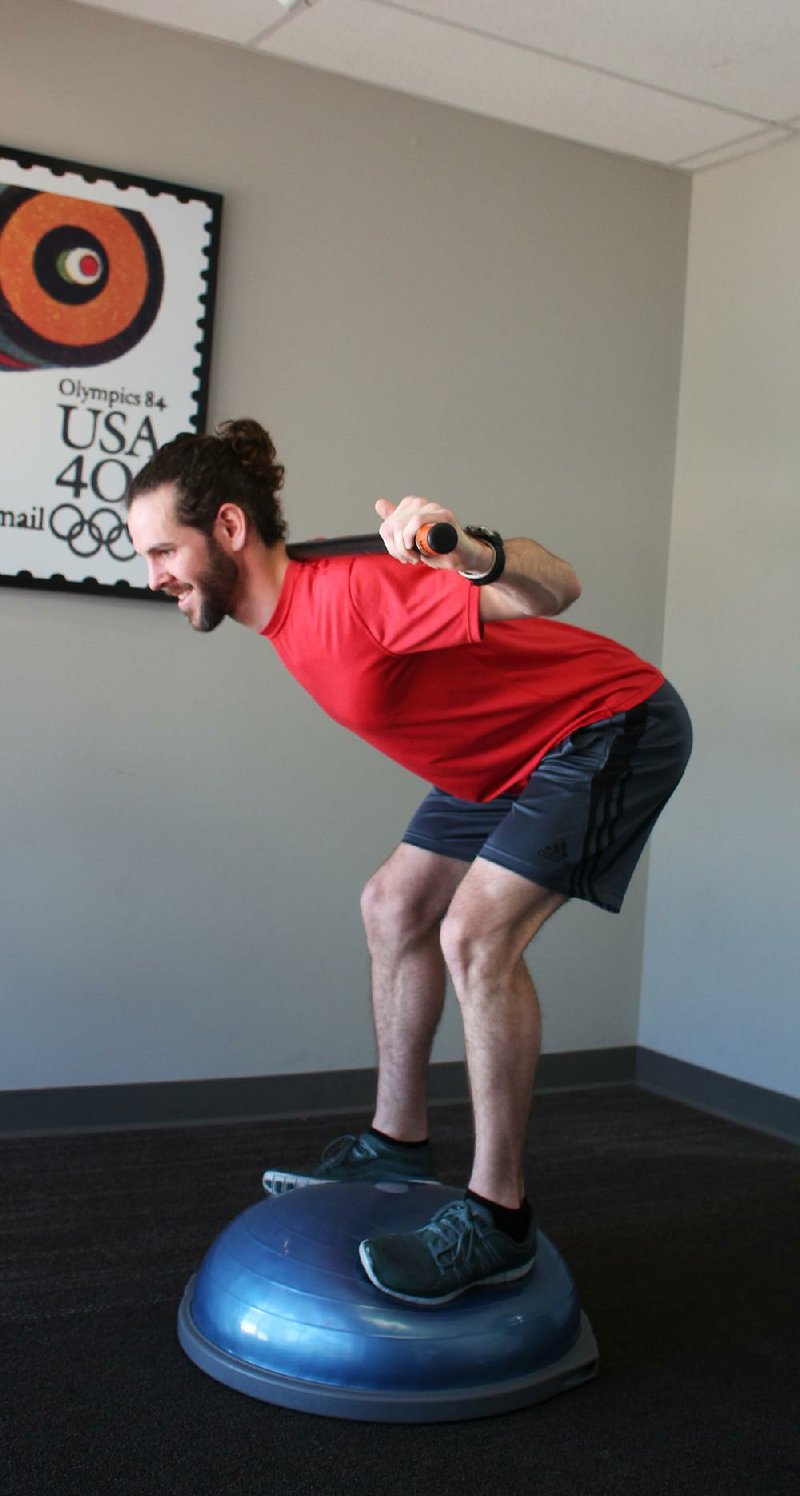The lower back's muscles represent an important link in a kinesthetic chain that determines one's overall biomechanical ability.
Without strong and flexible lower back muscles, the integrity of the core is compromised, and one is at a greater risk for chronic pain.
This week, I'll offer some insight into maintaining good lower back health, and I'll introduce an exercise that addresses the lower back in an exciting way.
Remaining in a seated position for extended periods leads to shortened hamstrings, tight hip flexors and weak lower back muscles. This is a recipe that can lead to significant lower back problems down the line. To counteract the effects of sitting, it's important to take steps to address each of these areas individually.
First, stretch your hamstrings every day. Even if you just take a few minutes in the morning and a few at night, maintaining good flexibility in your hamstrings will do wonders to minimize the pressure placed on the pelvis and, by extension, the lower back. I recommend performing a static hamstring stretch by holding a position of mild discomfort for 20 seconds. Whether you choose toe touches on the floor, seated or standing, the idea is gently to push the hamstrings to full extension.
You can also stretch the quadriceps (the long muscles on the front of your thigh) and other hip flexors using a familiar move known as the quadriceps stretch, while standing or lying on one side.
Once stretching the hamstrings and hip flexors is taken care of, it's time to work on strengthening the lower back muscles. These strange, sheath-like muscles are at an awful mechanical disadvantage, by design. This means they are susceptible to injury, and so it's very important to take lower back strengthening slowly and cautiously.
I recommend torso extension exercises that require lifting the upper body upward while the hips and lower body remain still. This movement will strengthen the torso extensors and mimic daily movement patterns at the same time.
Lower back strengthening can also be done with certain isometric exercises on the floor or using a Swiss ball. Since these muscles are constantly performing light contractions throughout the day, it makes sense to train them for muscular endurance as opposed to strength alone. For isometric exercises, try holding the torso extension eight to 12 seconds and do two to three sets.
This week's exercise is designed to be dynamic, with the lower back muscles being made to move, but it could be modified as an isometric hold if one's lower back is not strong enough for the movements. I would not try this until I was comfortable with a "normal" good morning exercise and also had mastered a few other balancing exercises on the BOSU (Both Sides Utilized) ball.
For those who are ready, the BOSU Good Morning will improve lower back strength while challenging balance and coordination.
1. Set up a BOSU ball with the ball side up. Select a very light barbell (10 to 20 pounds to start) and place it on your shoulders behind your head.
2. Stand on the BOSU with your feet 12 to 18 inches apart. Tighten your abdominal muscles and press your hips backward.
3. Lean forward with your back straight. Continue lowering your torso until your upper body and lower body form an L shape.
4. Your chest should be facing the floor at the bottom of this motion.
5. Keeping the abdominals tight and, feeling the effort in your hamstrings, raise the torso back up until you are in a full standing position.
6. Do two or three sets of 12 repetitions.
For those who have not attempted a good morning exercise before, master it on the floor before adding the BOSU. After a week or two, you should have enough coordination and balance to move to the BOSU.
Matt Parrott has a doctorate in education (sports studies), a master's in kinesiology and is certified by the American College of Sports Medicine.
ActiveStyle on 03/16/2015

